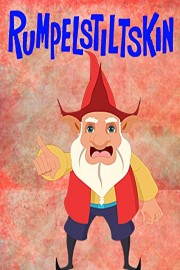-
Genres
-
DirectorKarthik Chandran
-
Release Date2016
-
Runtime12 min

There appears to be a misunderstanding, as there is more than one adaptation of the tale of Rumpelstiltskin. Due to the ambiguous nature of the request, I will provide a general description of what a Rumpelstiltskin movie might encompass, based on the classic fairy tale, without referencing a specific movie adaptation. This description will not be specific to any film rendition but will focus on elements commonly found in adaptations of the story.
Rumpelstiltskin is a dark fantasy movie that explores themes of greed, deceit, power, and the desperate lengths people will go to in order to achieve their desires. The story is based on the eponymous character from the fairy tale collected by the Brothers Grimm, where a bizarre and sinister figure grants wishes with high stakes and dire consequences.
The film begins in a despairing kingdom beset by hardship and poverty. The camera sweeps over a grim, medieval landscape, entering a rustic miller's cottage where we meet the beautiful and kind-hearted protagonist, the miller's daughter. Her world turns upside down when her father, in a foolish attempt to gain favor with the king, falsely boasts that she has the magical ability to spin straw into gold.
Word of this extraordinary talent reaches the king, who is as greedy and cunning as he is powerful. He summons the miller's daughter to his castle and locks her in a room filled with straw, demanding she fulfill the task, or face dire consequences. As the miller's daughter despairs, knowing she cannot perform the impossible feat, the enigmatic and grotesque character of Rumpelstiltskin emerges from the shadows, offering to spin the straw into gold for her—but at a steep price.
Employing visually rich and magical storytelling elements, the movie takes the audience through the suspenseful and eerie ritualistic spinning, as Rumpelstiltskin works his dark magic through the night. Gold threads shimmer and grow, filling the room with an otherworldly radiance, as Rumpelstiltskin's wheel turns. Dawn brings the king, who is astonished and pleased by the gold. However, a deeper greed takes hold of him, and he demands more, barely acknowledging the miller's daughter's tormented state.
Each repeated success of the nightly spinning comes at an increased cost, setting the stage for a climax where Rumpelstiltskin asks for something far more precious than any treasure or trinket; something that will bind her to him forever unless she can guess his name. The stakes of the story reach their peak as the miller's daughter is faced with the impossible task of uncovering the name of this otherworldly creature.
As the story progresses, the film delves into the miller's daughter's desperate quest to learn the name of her mysterious benefactor-captor, Rumpelstiltskin. The action moves through moonlit forests, the secretive underbelly of the castle, and encounters with mystical beings and ordinary folk alike, each offering clues and riddles that only serve to deepen the mystery and tension.
Throughout the movie, Rumpelstiltskin is portrayed as a mercurial being—capricious, cunning, and deeply enigmatic. His interactions with the miller's daughter are laced with a menacing charm, as he seems to revel in the torment his bargains cause. Yet, as his true nature is slowly revealed, we catch glimpses of a character more complex than the villainous trickster on the surface.
The miller's daughter, though trapped in an impossible situation, exemplifies courage, cleverness, and resilience. Her transformation from a terrified victim to a determined and resourceful heroine forms the heart of the story. She becomes the embodiment of hope and ingenuity in the face of overwhelming odds, blurring the lines between victimhood and empowerment as she navigates her perilous circumstances.
Adding layers to the narrative, the film paints the king in shades of gray. While his greed sets the plot in motion, there are fleeting moments where the audience is given insight into the vulnerabilities and fears that drive his actions—although these do not excuse the exploitation and suffering he causes.
The visual tone of Rumpelstiltskin is as intricate and textured as the narrative it weaves. The cinematography alternates between the warm glow of the spinning straw, the cold stone of the castle's confines, and the vibrant, yet haunting, natural surroundings of the forest. The movie's aesthetic is steeped in an ethereal quality, echoing the folklore roots of its source material, while employing contemporary effects to bring the magic and darkness to life.
The movie culminates in a finale that brings all the story's elements together in a test of wit and will. Without revealing the outcome, the film closes on the universal message that even when confronted with the impossible, the strength of the human spirit can overcome the might of both mortal and magical tyrannies.
Rumpelstiltskin, as a film, taps into the primal and enduring allure of fairy tales—a world where the lines between right and wrong, reality and fantasy, and power and impotence are constantly in flux, and where a single name can hold the power to topple empires and alter fates.
Rumpelstiltskin is a 2016 animated movie with a runtime of 12 minutes.